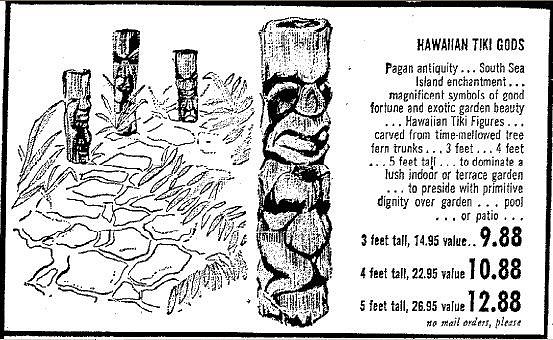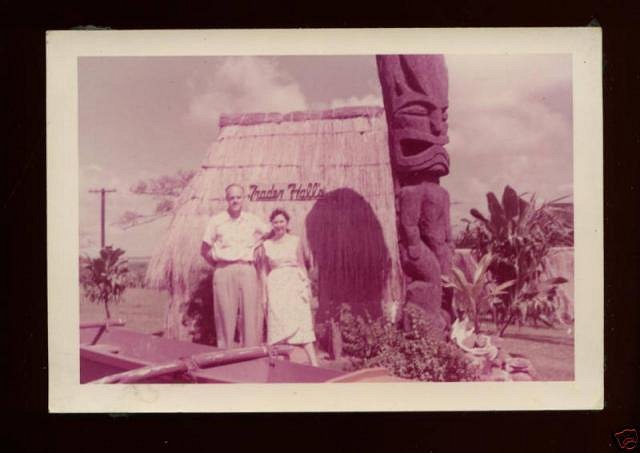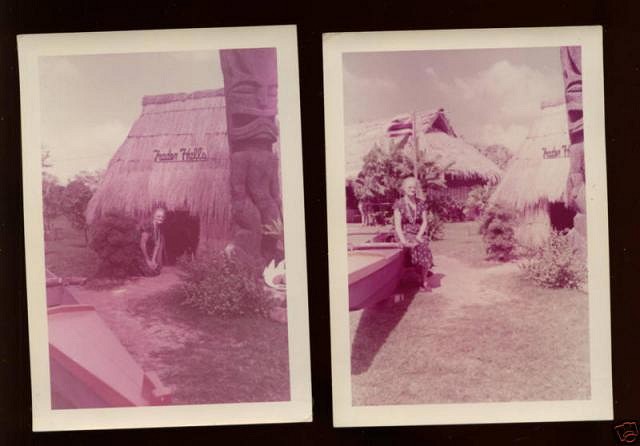Tiki Central / General Tiki / The Mystery of the Hawaiian Fern Wood Tiki
Post #514838 by Sabu The Coconut Boy on Wed, Mar 3, 2010 3:52 PM
|
STCB

Sabu The Coconut Boy
Posted
posted
on
Wed, Mar 3, 2010 3:52 PM
Bongo & sirginn - Much appreciated. Thanks. Bosko - Thanks so much for chiming in. I know you've had a strong interest in tree fern tikis for much longer than I have and I hoped you would lend your opinions and expertise. I don't necessarily have any firm belief that those mass-produced fern wood tikis were made in Hawaii. I just kind of fell for the old "if it's in the ad, it must be true" trap. But if they were manufactured cheaply elsewhere and shipped to Hawaii, that would also help explain why the style is culturally similar yet different - like the current Balinese tikis that Trader Vic's sometimes uses with their Buddha-like bellies. That Stewart's ad that I posted uses the word "Hapu'u" for "Tree Fern" which applies to 2 species of fern found only in Hawaii. So if they aren't carved in Hawaii, they would be technically be lying. But again they also could have just wanted a Hawaiian word to describe any generic Tree Fern they might be selling. I've got a different ad from Pally's, from their 1961 yearly Hawaiian Sale, and it proves that they were really mass-producing these guys for cheap:
As far as the Trader Hall's tiki - I'm convinced it's Tree Fern as well. Only fern wood has that dark, rough, fibrous look that doesn't reflect light in photos. If that carver also carved the two 1955 examples in my earlier post, as well as your Ulu Mau examples, then he would seem to be Hawaiian, or at least had access to the Bishop Museum. The classic, crouching wrestler stance from the ancient Hawaiian images is spot-on. The "Hina" tiki looks like it's a mix of a large temple image (knees, feet and head) and one of the smaller Aumakua female carvings (breasts & arms) from the museum's collection. And I love how the Trader Hall tiki takes a large Ku figure and adds a King Kamehameha-style feather headdress on top instead of the standard ladder-like crest or falling braids. If this is indeed the same carver doing these, then he's very creative and talented. But again, this begs the question - why did he decide to use Tree Fern instead of the traditional hardwoods? To your second question - I did some research on the size of the local Hapu'u Hawaiian Tree Ferns (Cibotium spp.) that were used for carving. The trunks can be very tall. One source said up to 8 meters and the other said 25 feet, so they both seem to agree. That would be the carve-able trunk itself. There would be another 6 to 12 feet of fronds attached to the top. The width of the trunk on an old specimen can be 3 feet in diameter. That's plenty big for the large tikis by your carver. It looks like the root also was carved, so that would give the big-head effect that root-ball tikis also have. The back of my "Hina" photo states that she was carved from the root. Someone on TC just posted these snapshots of the Trader Hall tiki and I don't think he's really that huge. It's just the hut he's standing next to is very small:
I think the local Hawaiian Tree Ferns could have accommodated him, as well as the giant World's Fair tikis that Kalani seems to have carved. What do you think? Thanks again for posting on this. Sabu
[ Edited by: Sabu The Coconut Boy 2010-03-03 16:19 ] |




